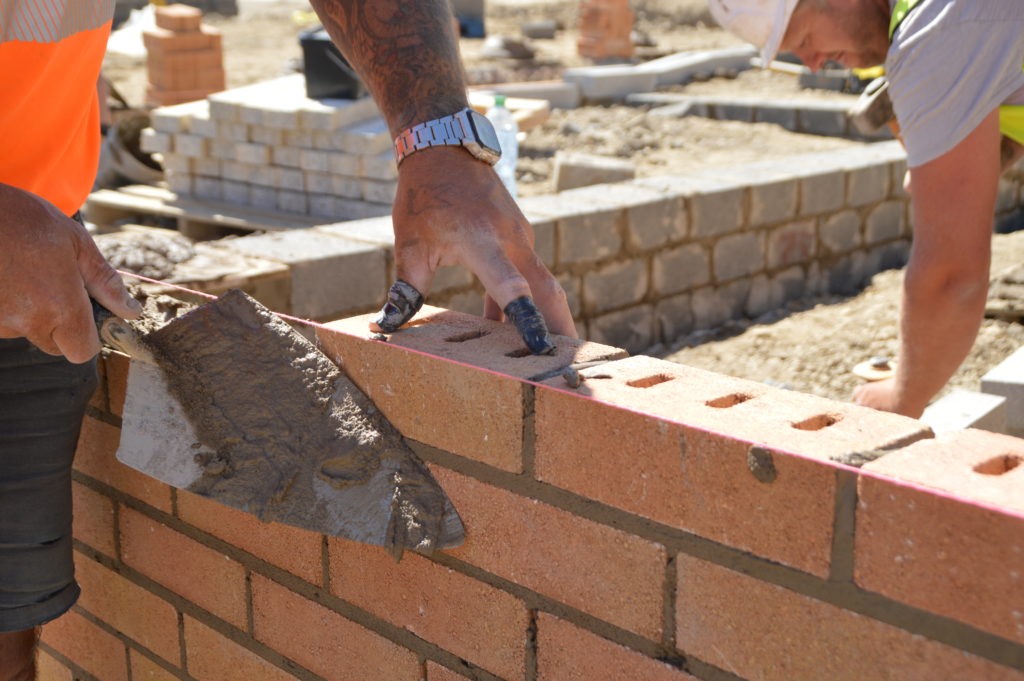Taking contractor management seriously: Creating an effective permit to work process
Contractor management should not be taken lightly. Contractors need information and permissions to complete tasks safely and efficiently.
15 August 2022

Contractor management is a process that should not be taken lightly
Contractor management can be tricky to do well. When you are outsourcing work to others, it is important to make sure that contractors have the proper information and permissions to complete the task safely and efficiently. This is equally true whether you are contracting for large projects or discrete tasks.
A contractor management system should include processes that oversee and administer contractors' health and safety information, insurance information, training programs and documentation. This will help ensure that everyone involved in the project is safe and compliant with regulations.
Furthermore, implementing an effective permit to work process is essential for contractor management.
Fortunately, there are contractor management software and permit to work apps available that can help streamline this process. By using these health and safety software tools, you can help make sure your contractor management system is up to par.
In this blog, we explore the fundamentals of good contractor management, and how a good permit to work process will support you.
The basic principles of contractor management
When it comes to contractor management, there are a few key principles that we think you should always keep in mind:
- Accountability
- Qualifications
- Authorisation and permission
- Clarity of task
- Assessment of risk
- Safe ways of working
- Safe environment
- Considerate hosting
Breaking contractor management down
With these key principles in mind, how do they apply to your workplace, and how will you fulfil them?
Accountability
Contracting out work does not absolve you of your legal responsibilities for health and safety. Your contractor is responsible for its workers - but so are you! You are ultimately responsible for the safety of all workers on your site, including contractors.
This means that you need to have systems and processes in place to ensure that contractor health and safety is managed effectively. You should also make sure that you have a clear understanding of the contractor's health and safety arrangements.
Qualifications
When selecting a contractor, it is important to make sure that they are qualified to do the job. This includes having the necessary skills, experience and training.
You should also check that the contractor has any required licenses or permits. For example, if they will be working with asbestos, they will need an asbestos removal license. Failure to do so could result in serious penalties.
A variety of pre-qualification Safety Schemes in Procurement (SSIP) schemes exist, allowing contractors to easily evidence their credentials. Check out the SMAS website for more information.
Authorisation and permission
If you are comfortable that your chosen contractor is suitably qualified, you then need to consider granting the right authorisations. Before work begins, you should make sure that the contractor has all of the necessary permissions in place. This includes any required licenses, permits or planning permission.
It is essential that you have a robust permit to work process in place. This will ensure that all contractor activity is authorised, and that it is carried out in a safe and controlled manner. Without one, you could be exposing your business to unnecessary risks.
For more information on permit to work systems, check out our other blog posts, or read more below.
Clarity of task
When commissioning work from a contractor, it is important to be clear about what you expect them to do. This includes specifying the work that needs to be done, as well as any deadlines or milestones.
It is also important to make sure that the contractor understands any risks associated with the task. For example, if they will be working at height, they need to be aware of the dangers and have the necessary training and equipment.
Assessment of risk
As we mentioned above, it is important to assess the risks associated with any task before contractors begin work. This assessment should identify any hazards and risks involved, as well as the controls place. You can then put measures in place to mitigate the risks.
It is also important to make sure that the contractor has adequate insurance in place. This will protect them (and you) in the event of an accident or incident.
Safe ways of working
When contractors are on your site, they need to follow any safe working procedures that you have in place. This includes following any rules and regulations that apply to your industry or sector.
It is also important to make sure that contractors understand the importance of safety and are aware of any hazards on your site. They should also know what to do in the event of an accident or incident.
Safe environment
As well as having safe working procedures, it is also important to create a safe physical environment for contractors.
For example, this includes making sure they have the necessary Personal Protective Equipment (PPE), and that their work area is well-lit and free from trip hazards. Additionally, contractors should park their vehicles properly and dispose of waste safely.
Considerate hosting
Finally, it is important to remember that contractors are guests in your workplace. This means that you need to treat them with courtesy and respect.
This might include providing them with adequate facilities, such as toilet and washing facilities, canteen/break areas and changing rooms. You should also make sure that they have access to water and first-aid facilities.
Crucially, you should also provide them with any information they need about your site, including maps, health and safety. Make sure than contractors complete your site inductions and safety briefings, so they know everything they need to.
You can ensure that contractor management is taken seriously in your organisation by considering these principles. This will help to create a safe and productive environment for all.
And using contractor management and permit to work health and safety software will make it even easier.
Permit to Work software will help
With contractor management software, you can take a proactive approach to health and safety, by identifying and assessing risks before work begins. This will help to create a safe environment for all. And using a permit to work app will make it even easier.
If you are looking for health and safety software to help with contractor management, then check out our permit to work app.
What is a permit to work, and why is it needed?
A permit to work is a document that gives permission for contractor employees to carry out specific tasks. It outlines the risks involved and sets out any controls that need to be in place.
Contractors working on specific hazardous tasks - such as working with electricity or at height - will need a valid permit to work. This also includes to gas works, hot works, or using heavy plant and machinery.
The permit to work system is an important part of contractor management, because it ensures that work is completed safely. By having a permit to work in place, you can be sure that contractor employees understand the risks involved and are aware of the controls that need to be followed.
Contractor employees should not start work without a valid permit to work. Only properly trained and qualified contractors can carry out the task.
A permit to work also allows you to track and monitor contractor employees while they are working on your site. You want to know that contractors are following the controls that you have put in place.
It is important to remember that a permit to work is not a substitute for health and safety training. Contractor employees should still receive adequate training before they start work.
The advantages of health and safety software
Contractor management software will help you take a proactive approach to health and safety, by identifying and assessing risks before work begins. This will help to create a safe environment for all. And using a permit to work app will make it even easier.
You should use the permit to work system alongside other contractor management measures, such as induction briefings and health and safety meetings. As a result, you will have confidence that contractor management is taken seriously in your organisation.
So, if you are looking for a permit to work app or software to help with contractor management, check out our software today.
Work Wallet is a modular health and safety software platform, which provides everything you need all in one place. However, you are not tied in to costly bundles, with features you do not need. The choice and flexibility is yours, to subscribe only to what you need when you need it.
Our software makes contractor management easier and more effective. So why not download it today?
Contact us for more information, or book a live demo, to find out more.
Share post
More Posts
How does a Permit to Work system help control site safety?
Aug 2022
A permit to work system is an essential part of controlling hazardous tasks on site, helping to manage all the...
Creating a permit to work template that works
Aug 2022
Having a good permit to work template is essential when running a hazardous site. Find out what to include.




